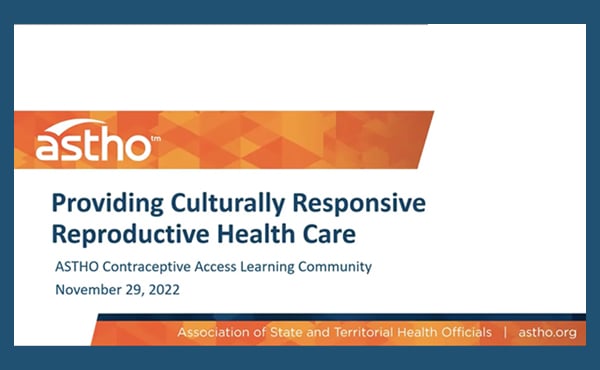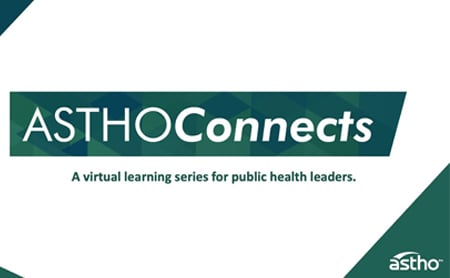High-quality reproductive health services improve health outcomes through preconception, prenatal, and interconception care. They also increase access to education and contraception for people of reproductive age to enable responsible and respectful sexual activity as well as safeguard and promote healthy lives throughout the lifespan. ASTHO collaborates across states and territories to improve capacity to increase access to contraception.
Representatives from six state health agencies and their partners are currently participating in the ASTHO Contraception Access Learning Community (CALC), funded by Arnold Ventures. Under this learning community, participants receive support as they navigate programmatic and policy issues surrounding access to contraception including funding, expanding telehealth, creating service equity, and supporting the state and territorial workforce. Using individualized workplans and personalized strategies, learning community teams address gaps in contraceptive access throughout their states to provide better care across the lifespan. As part of the CALC, ASTHO is producing a series of written publications and online learning opportunities to further solidify knowledge on key topics related to contraception access.
Featured

Equitable and Accessible Contraception Access Highlighted in Special Issue of AJPH Sponsored by ASTHO
ASTHO sponsored a June 2022 special issue of the American Journal of Public Health on equitable and accessible contraception access.

Reproductive Health Services Expanded During Pandemic But Inequities Persist
This brief explores how temporary changes to state and federal regulations, payment policies, and increased uptake of telehealth technology during the COVID-19 pandemic expanded access to reproductive health services, including delivery of care to pregnant women via telehealth services, at-home contraceptive method counseling, and virtual sexually transmitted infection care.

Understanding the Updated Women’s Preventive Services Guidelines
This blog post explains changes to the Women’s Preventive Services Guidelines, which include a new guideline on obesity prevention for midlife women and updates to five existing guidelines.
Project Spotlight
 Contraception Access Learning Community: Resources
Contraception Access Learning Community: Resources
This series of written publications and online learning opportunities are part of the Contraception Access Learning Community. They include webinars and articles that highlight emerging topics related to expanding access to contraception.
Latest Contraception Access Resources

Advancing Contraceptive Care to Improve Maternal Health Outcomes
Learn More
Moving from Design to Implementation: Lessons on Expanding Contraception Access in New Jersey
Learn More

Implementation of Pharmacist Prescribed Contraception: Key Policy Considerations
Learn More


Leveraging State Health Departments to Improve Access to Emergency Contraception
Learn More